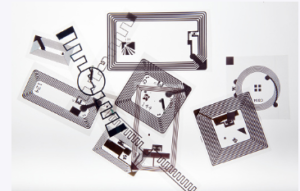RFID tags give physical objects a distinct electronic identity; an RFID reader decodes this data and assigns it a meaningful, unique reference number.
The reader and antenna work in concert to emit radio waves and receive signals from a transponder.
RAMP RFID readers can be fixed or mobile, giving you access to assets and employees from anywhere. Furthermore, it provides enhanced inventory accuracy to meet customer demands while remaining competitive.
Cost
 There are several variables to consider when considering the cost of RFID readers. These include the technology used (active or passive), the tags themselves, and whether this system needs to be standalone or integrated into an existing enterprise asset management system.
There are several variables to consider when considering the cost of RFID readers. These include the technology used (active or passive), the tags themselves, and whether this system needs to be standalone or integrated into an existing enterprise asset management system.
The initial cost of a RAMP RFID readers system is usually the highest, though this cost is variable and could increase with additional readers, cabling, or other equipment requirements. Furthermore, ongoing expenses like licensing and support fees for passive RFID technologies must also be considered.
Passive RFID systems tend to be much cheaper than active systems, with the total cost of ownership being about ten times lower. The primary advantage of passive RFID lies in its affordable tags – typically priced at less than a dollar each.
A cost-effective RTLS software package could run you less than $1,000. At the same time, an enterprise application that integrates with your ITAM repository and sends automated updates can set you back thousands of dollars. Furthermore, installation services or onsite support may be required depending on the scope of your project.
Handheld scanners range in price from $1000 to $4500 without software running on them and come from various manufacturers with various features and capabilities.
These devices can be beneficial for weeding, shelf reading, pulling items to fill holds, and performing inventory. Furthermore, they help improve inventory accuracy and security.
Accuracy
RAMP RFID readers operate with a system composed of three elements: an antenna, transceiver and transponder (tag). The tag receives signals from the reader and responds accordingly; its connection to a transceiver translates this data and sends it to your computer system.
RFID readers are capable of scanning a single tag or multiple tags simultaneously. The number of tags that can be read simultaneously depends on each tag’s frequency, size, and shape.
Scanning multiple tags simultaneously simplifies the reading process and speeds up inventory cycles for small teams.
RFID readers, unlike barcode readers, do not require a line of sight between themselves and the code or tag on an object. It enables them to scan items farther away or stacked atop each other.
RFID systems can be secured using digitally signed firmware, making them resistant to high-jacking and malicious data corruption. Furthermore, you may implement features like disabling tag reading from long ranges or other measures that prevent people from listening in on the communication between the reader and tag.
Security
RFID readers scan and decode the data stored in RFID tags, either inside or attached to physical objects. This data can be utilised for various purposes like warehouse security or retail store safety checks.
An RFID reader sends Radio Frequency (RF) signals to the tag, which absorbs that energy and returns a digital signal that the connected system can use for decision-making. It works similarly to reading barcodes or QR codes on products.
Various attacks can be used against an RFID access control system. These include man-in-the-middle (MITM), cloning and brute force.
In protecting your employees’ RFID cards, the best approach is to separate their identification details from the cards and store them safely in an RFID-blocking sleeve or wallet. Doing this helps guarantee that an attacker cannot copy information from an employee’s card without possessing their ID.
Mobility
If your business relies on expensive assets like test equipment, transport packing, computer technology and field vehicles, having the ability to track these items as they move throughout your facility is essential. An RFID reader can automatically monitor these assets’ locations within your facility so you can maintain tight control over them and prevent theft or loss.
RFID readers are handheld or fixed devices that use radio waves to transmit signals that activate tags. Once the reader receives these signals from the tag, it then relays information back to itself.